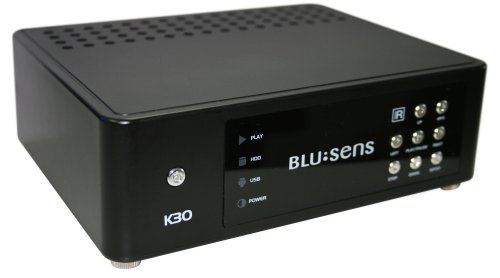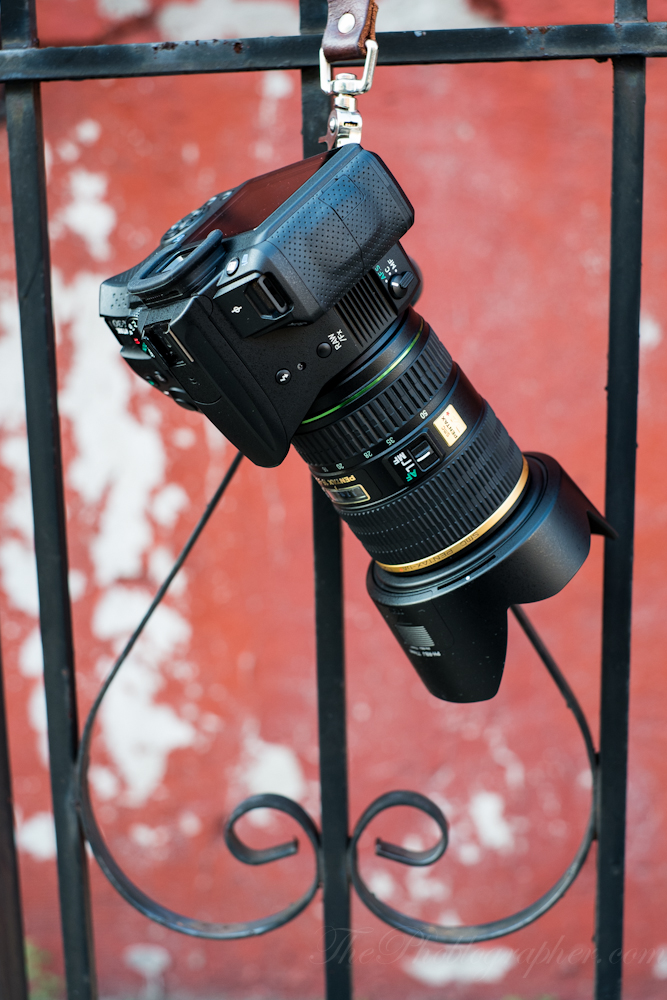Blusens K30 Software

The mid-level section of the DSLR market has had quite a lot to contend with in recent years, not least the introduction and subsequent rise in popularity of compact system cameras. One way that manufacturers have managed to sustain interest in their mid-level DSLR ranges has been to borrow technology from their more expensive cameras and shoehorn it into less expensive models. As such, we’re now seeing more and more mid-level DSLRs with vari-angle LCD monitors, HD video recording along with external microphone ports. Pentax has used this approach to good effect too (indeed, in terms of offering pure value for money, it could even be argued that Pentax has led the way with many of its recent DSLR offerings) and the K-30 borrows a number of features seen on the more expensive, albeit older, including weather sealing. Of course, the K-5 is already two years old, and so Pentax has also turned to some of its more recent releases – most notably the – to flesh out the inside of the K-30 with. But does this approach add up to a camera that’s likely to tempt DSLR upgraders away from the ‘big two’ brands of Nikon and Canon, or indeed the rash of highly featured CSCs currently on the market?
Pentax K-30 Manual Online: Using The Provided Software, Installing The Software. Lal Kitab Pdf File Bengali. 'SILKYPIX Developer Studio 3.0 For PENTAX' Is Included On The CD-ROM.

Let’s take a closer look and find out. At its heart the K-30 is based around the same 16MP APS-C CMOS sensor that was used in the K-01, which itself was based on the chip found in the older K-5.
Sensitivity also follows suit, with the K-30 offering a standard sensitivity range of ISO 100-12,800, which is further expandable to ISO 25,600. While the overall aesthetics of the K-01 divided opinion somewhat, we were nonetheless impressed with the performance of its CMOS sensor’s ability to resolve fine detail, and this is something that the K-30 brings to the table as well. In addition to JPEG capture, it’s also possible to record lossless Raw image files in the Adobe-friendly.DNG file format. One further area where the K-30 borrows from the K-01 is with the Pentax PRIME M image processor. Unlike the PRIME II processor found inside the K-5, the PRIME M is optimised for HD video capture, live view and reduced power consumption.
While the K-30 can’t quite match the 7fps maximum continuous shooting speed of the K-5, it’s not far behind with a still-impressive 6fps top shooting speed. This is some way faster than it’s main rivals, namely the Canon 650D (5fps) and Nikon D3200 (4fps) and even compares well against some semi-pro DSLRs such as the Canon 5D MkIII (6fps). One area where the K-01 did lose quite a few points was with its noisy and rather slow AF system, and to some extent the K-30 also suffers from the same issues – at least when it’s being used in Live View mode. Using the viewfinder, however, there are no such problems as this enables the camera to make use of its all-new SAFOX IXi autofocus module, which uses phase-detection technology alongside improved optical components and a diffraction lens for better performance in low light. The K-30 also gets the same 11-point AF arrangement of the K-5, nine of which are cross-type sensors, with AF-Single, AF-Continuous and AF-Auto focus options available alongside a manual focus mode.
One further benefit the K-30 enjoys over the K-01 is an optical viewfinder that offers a 100% field of view for accurate framing. Should you prefer to use the rear monitor then the K-30 comes with a fixed 3in, 920k-dot screen. The K-30 is powered by a bespoke Li-ion battery that’s good for a claimed 480 shots, although an adapter is also supplied in the box that enables you to switch to four AA batteries instead. While this does provide some flexibility, it should be noted that without the adapter the Li-ion battery could have been bigger and more powerful.
The K-30 offer a generous range of still image capture modes including the full range of PASM exposure modes, along with an array of fully Automatic and Scene mode positions for those point-and-shoot moments. Video capture takes a step up from the 720p of the old K-r with 1080p Full HD capture now possible at 30, 25 and 24fps. Somewhat surprisingly there’s no external microphone port, however the camera does offer quite advanced audio recording controls within the in-camera menu. We were also disappointed to find that continuous AF isn’t possible when shooting video, which is something we certainly hope to see in a future model.